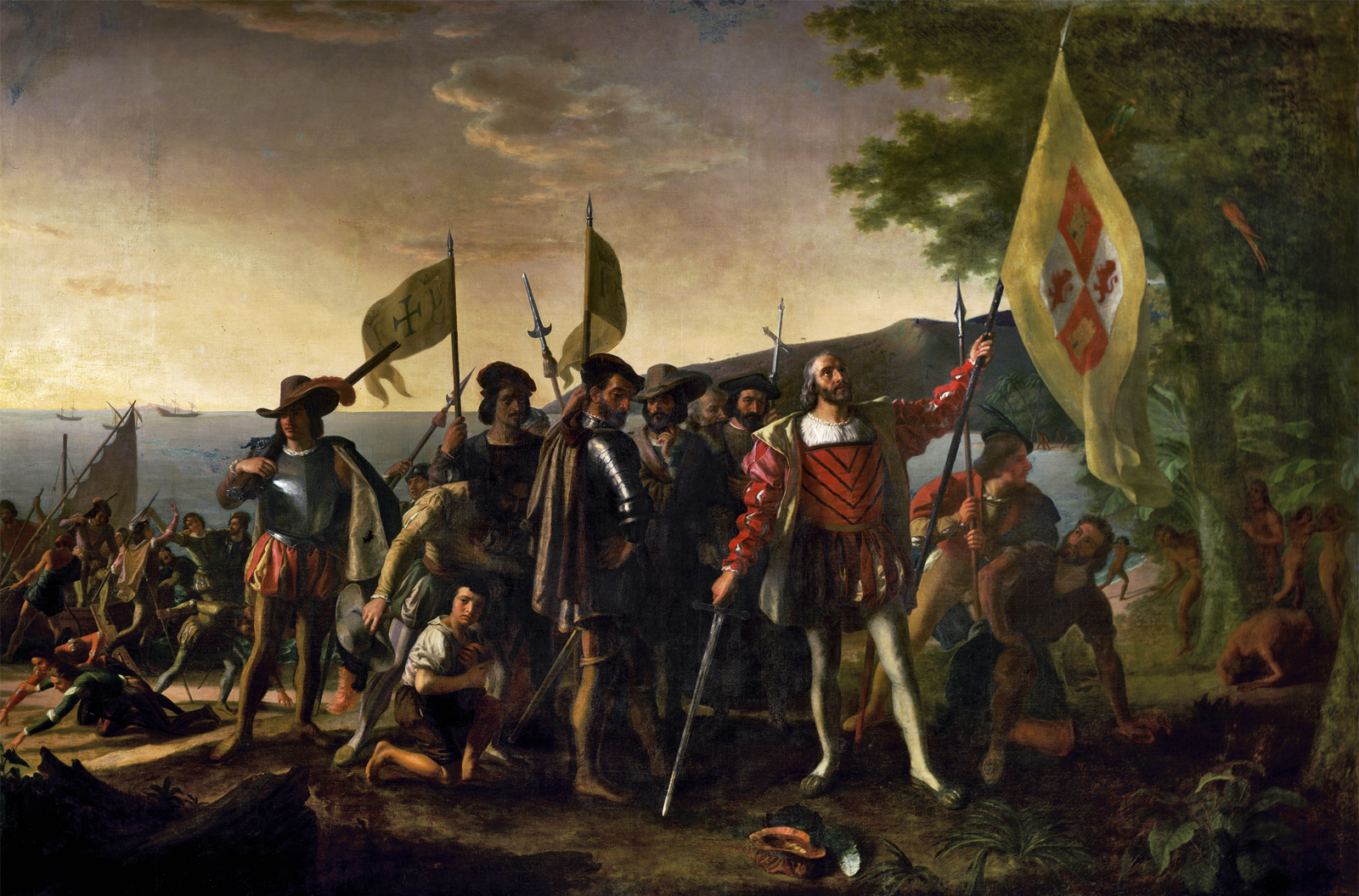Columbus (1451-1506), born in Genoa, was an experienced sailor and had gone at least once to the Gold Coast of Africa; he may also have sailed to Iceland. His central obsession, that the Far East (“the Indies”) could be reached by sailing westward from Spain, was not unique. No educated person in 1492 seriously doubted that the earth was round, but as it turned out most scholars had greatly underestimated its size.
The major problem was a practical one; if one accepted Ptolemy’s ancient estimate of the circumference of the earth, no ship of the time could complete so great a voyage. But Columbus insisted that the wealthy island of Cipangu (Japan) was only 2,400 miles due west, a distance easily within the range of ships and crews.
Columbus might not have been able to set out had his sole aim been that of reaching the Indies. But he was also charged to discover and secure for the Spanish Crown new islands and territories. Therefore, even if he did not reach the Indies, there seemed a chance that he would reach something new.
Setting out from Palos near Cadiz on August 3, 1492, in three very small ships, he made a landfall on an island in the Bahamas on October 12, and eventually discovered the large islands we know as Cuba and Santo Domingo (Haiti). Since he assumed that he had reached the Indies, he called the people he encountered there “Indians.” On a second voyage in 1493, Columbus went out with seventeen ships and some fifteen hundred colonists, explored further in the Caribbean, and laid the foundations of the Spanish empire in America.
On his third voyage, in 1498-1500, he reached the mouth of the Orinoco River in South America, but he encountered difficulties among his colonists and was sent home by the royal governor, who took over the administration of the Indies for the Crown. Columbus was released on his return to Spain, and in 1502-1504 he made a fourth and final voyage, in which he finally reached the mainland at Honduras in August 1502. He died in comparative obscurity in Spain.
News of Columbus’s voyage soon spread by word of mouth in Europe, for printing was still in its infancy. The most effective spreading of the word about the New World in print was done by another Italian navigator in the Spanish service, Amerigo Vespucci (c. 1454-1512), who wrote copiously about his explorations in the immediate wake of Columbus. Vespucci’s letters came to the attention of a German theoretical geographer, Martin Waldseemuller (c. 1470—c. 1522), who in 1507 published a map blocking out a landmass in the southern part of the New World that he labeled, from the Latinized form of Vespucci’s first name, America.
After Columbus, discoveries multiplied. Juan Ponce de Lean (c. 1474-1521) reached Florida in 1513, and Vasco Nunez de Balboa (1475-1519) in 1513 crossed the Isthmus of Panama and saw the the wide Pacific. Many other Spaniards and Portuguese in the first two decades of the sixteenth century explored in detail the coasts of what was to be Latin America.
Maritime exploration then turned to the problem of getting around the Americas and into the Pacific by sea. North America proved an obstacle indeed, for the great rivers barely penetrated the great continent, the breadth of which was totally unknown. The St. Lawrence River looked more promising, and to its first French explorers it seemed like the sought-for strait; but it too gave out, and the rapids near Montreal that showed it was only another river received the ironic name of Lachine (China). Not until 1903-1906 was the ice-choked “Northwest Passage” in the Arctic finally traversed by an English expedition.
However, the “Southwest Passage” was found only a generation after Columbus. Ferdinand Magellan (c. 1480-1521), a Portuguese in the Spanish service, set out in 1519 with a royal commission to find a way westward to the Spice Islands of Asia. Skirting the coast of South America, he found the difficult, fog-bound passage that bears his name, the Straits of Magellan, reached the Pacific, and crossed it by a route not precisely known.
After they reached the islands now known as the Philippines, Magellan was killed in a skirmish with a hostile chief. One of his captains, however, kept going along the known route by the Indian Ocean and the coast of Africa. On September 8, 1522, the Victoria and a crew of eighteen men—out of five ships and 243 men that had sailed in 1519—reached Cadiz. For the first time, circumnavigation of the earth had proved empirically that the world was round.

